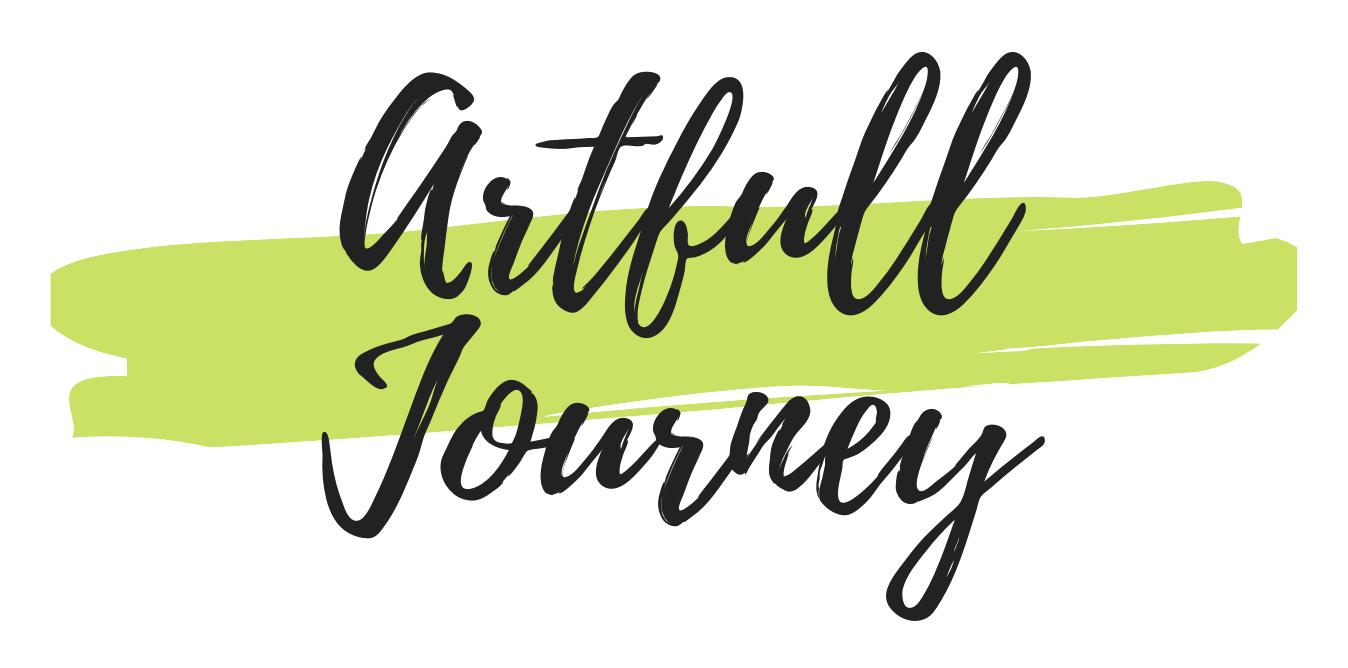Starting an art and creative blog is more than just a hobby—it’s a transformative journey that can turn your passion into a thriving platform. Whether you’re an aspiring artist, a seasoned creator, or someone exploring the world of creativity, launching a blog is a powerful way to share your vision, inspire others, and build a community around your craft. In this ultimate guide, we’ll walk you through everything you need to know to start and grow a successful art and creative blog, from finding inspiration and choosing the right platform to overcoming challenges and monetizing your efforts. With the right strategies and dedication, your blog can become a go-to destination for art enthusiasts and creators alike, helping you connect with like-minded individuals and showcase your work to the world.
Key Takeaways
- Develop a Unique Voice and Personal Brand: Establish a distinct style that resonates with your audience, reflecting your personality and artistic vision.
- Prioritize High-Quality, Original Content: Focus on creating valuable, unique content that stands out and provides deep insights into the art world.
- Foster a Strong Community: Engage readers through interactions, Q&A sessions, and challenges to build loyalty and a dedicated audience.
- Maintain Consistency in Publishing: Establish a regular posting schedule to keep your audience engaged and build trust over time.
- Explore Multiple Monetization Strategies: Diversify income sources through affiliate marketing, premium content, and selling products without compromising authenticity.
- Choose a Niche Thoughtfully: Select a specific area within the art world that aligns with your passions and current trends to stand out.
- Set Up a Robust Technical Foundation: Use WordPress, choose a reliable hosting provider, and design a clean, responsive website to enhance user experience.
- Plan a Strategic Content Mix: Include tutorials, reviews, personal stories, and more to cater to different reader interests and needs.
- Optimize for SEO and Accessibility: Research keywords, craft compelling titles, and ensure your content is easily discoverable and accessible.
- Leverage Social Media and Engagement: Use platforms like Instagram and Pinterest for promotion and participate in forums to expand your reach.
- Build a Loyal Community Through Interaction: Encourage feedback, collaborations, and newsletter sign-ups to keep your audience engaged.
- Stay Consistent and Adapt to Trends: Monitor analytics, learn from competitors, and evolve your strategies to remain relevant and competitive.
- Use Daily Inspiration and Trends for Content: Discover new art styles and techniques to spark creativity and keep your content fresh.
- Provide In-Depth Tutorials and Guides: Create step-by-step guides for popular techniques to add value for your readers.
- Feature Interviews with Artists: Build a community and provide insightful content by showcasing conversations with creatives.
- Discuss Emerging Art Trends: Stay ahead by covering topics like sustainability and AI in art to keep your content timely and relevant.
- Share Personal Projects and Journeys: Connect deeply with your audience by documenting your own artistic challenges and successes.
- Collaborate with Other Creators: Enrich your content with diverse perspectives by working with other artists on joint projects.
- Educate with Art History Insights: Delve into art movements and theories to inform and inspire your readers.
- Cover Art Events and Exhibitions: Attract enthusiasts by providing recommendations and coverage of galleries and fairs.
- Host Art Challenges and Prompts: Encourage participation and social media engagement with themed challenges.
- Review and Recommend Art Supplies: Help readers make informed choices by sharing detailed reviews of tools and materials.
- Experiment with Multimedia Formats: Enhance engagement with video tutorials, podcasts, and interactive quizzes to reach a wider audience.

How to Start an Art and Creative Blog
Starting an art and creative blog is an exciting journey that allows you to share your passion with the world. Here’s a step-by-step guide to help you get started:
1. Choose Your Niche
Your blog should have a clear focus to attract a dedicated audience. Consider what you’re most passionate about and what unique perspective you bring. Whether it’s digital art, traditional painting, sculpture, or art history, narrow it down to something that resonates with you personally.
2. Select a Domain Name
Choose a domain name that reflects your blog’s purpose. It should be memorable, easy to spell, and free of trademark issues. Tools like Google Keyword Planner can help brainstorm ideas.
3. Set Up Your Blog Platform
Decide between a self-hosted solution like WordPress or a hosted platform like Medium or Squarespace. For more control and customization, WordPress is highly recommended. Once installed, choose a theme that aligns with your aesthetic, such as our very own Artful Journey Theme .
4. Install Essential Plugins
Enhance your blog’s functionality with plugins like:
- Yoast SEO : Optimizes your content for search engines and improves readability.
- Jetpack : Adds features like commenting and sharing.
- WooCommerce : If you plan to sell products or courses.
5. Create High-Quality Content
Start with a mix of educational posts, personal stories, and tutorials. Share your creative process, review art supplies, and interview other creators. Examples of popular posts might include:
- Tutorials for creating specific art projects
- Artist spotlights and interviews
- Reviews of art materials and tools
- Guides to art events and exhibitions
6. Optimize for SEO
Use keywords that reflect your blog’s focus. Tools like Ubersuggest can help identify trending search terms. Incorporate these into titles, descriptions, and alt texts for images. For example, discuss art inspiration techniques in detail.
7. Monetize Your Blog
Once your audience grows, explore monetization options:
- Affiliate Marketing : Earn commissions by promoting art supplies and tools you trust.
- Sponsored Posts : Collaborate with brands or artists for paid content opportunities.
- E-books and Courses : Sell guides or online courses on topics like painting techniques or career development.
Always maintain authenticity and disclose partnerships whenever possible to build trust with your audience.
8. Build a Social Media Presence
Share your blog posts on platforms like Instagram, Pinterest, and Twitter to reach a wider audience. Use hashtags like #ArtJourney and #CreativeProcess to connect with like-minded individuals. Engage with your followers by responding to comments and messages.
9. Engage Your Audience
Encourage interaction by asking questions, hosting giveaways, and inviting readers to submit their work. Build a community where your audience feels valued and connected.
10. Stay Legal and Professional
Protect your content by registering trademarks and copyrights. Include disclaimers and privacy policies on your blog. Ensure all content is original and properly attributed to avoid legal issues.
11. Stay Consistent and Patient
Growing a blog takes time. Consistently publish high-quality content, learn from feedback, and adapt to your audience’s needs. Celebrate small milestones and remain open to new opportunities.
12. Promote and Collaborate
Share your blog on creative forums, groups, and social media. Collaborate with other creators for guest posts or cross-promotion. Attend art fairs or events to increase visibility.
By following these steps, you’ll be well on your way to building a thriving art and creative blog. Keep experimenting, exploring, and enjoying the process!
What Are the Best Resources for Starting an Art and Creative Blog?
Starting an art and creative blog is an excellent way to share your passion and connect with like-minded individuals. Here are some of the best resources and tools to help you get started:
1. Choosing the Right Platform
- WordPress : Ideal for those who want full control over their blog’s design and functionality. It offers a vast array of plugins and themes, including many specifically designed for artists and creators.
- Blogger : A great option for beginners due to its simplicity and ease of use. It’s perfect for sharing text, images, and videos seamlessly.
- Medium : A platform known for its artistic and creative community. It’s a good choice if you’re looking to reach a ready-made audience interested in art and culture.
2. Tools and Apps for Creators
- Artful Journey : A comprehensive resource for artists and creatives, offering tutorials, inspiration, and insights. Check out their guides on mastering various art techniques and staying motivated.
- Procreate : If you’re into digital art, Procreate is a must-have tool. It’s widely used by professionals and offers a wealth of educational content and brushes.
- Krita : Another excellent digital painting software with a large community and plenty of tutorials to help you get started.
3. Finding Inspiration and Community
- Art Blogs : Explore blogs dedicated to different art styles and mediums. Some popular ones include Artful Journey and ArtStation .
- Online Communities : Join forums like DeviantArt, Reddit’s r/art, or specialized Facebook groups. These communities offer support, feedback, and endless inspiration.
- Google Search : Use targeted keywords like “art blog ideas” or “creative writing tips” to discover niche blogs and resources tailored to your interests.
4. Monetization Tips
- Affiliate Marketing : Partner with art supplies brands and earn commissions by promoting their products. Many artists have successful side incomes doing this.
- Sponsored Posts : Collaborate with brands or artists to create sponsored content. Ensure it aligns with your style and audience to maintain trust.
- Premium Content : Offer in-depth guides, courses, or eBooks for sale. Platforms like Gumroad or Etsy can be great for selling digital products.
5. Final Touches
- Domain Name : Choose a memorable and reflective domain name that represents your blog’s theme. Tools like GoDaddy can help you find the perfect one.
- Branding : Develop a consistent color scheme, typography, and logo to create a recognizable identity. Consider using tools like Canva for easy design creation.
By leveraging these resources and following the steps outlined, you’ll be well-equipped to start and grow a thriving art and creative blog. Remember to stay consistent, explore new trends, and engage with your audience to build a loyal community around your work.

What Are the Key Elements of a Thriving Art and Creative Blog?
To establish a thriving art and creative blog, several key elements must come together to create a successful platform. Here’s a breakdown of the essential components:
- Targeted Niche Focus
Define your unique audience and specialize in a specific area of art or creativity. Whether it’s painting, digital art, photography, or crafting, narrowing your focus allows you to cater to dedicated followers and build expertise in your field. Consistently delivering high-quality content tailored to your niche helps you stand out in the competitive landscape of art blogging. - High-Quality Content Creation
Produce original and inspiring content that resonates with your audience. Share tutorials, artist spotlights, exclusive resources, and behind-the-scenes insights into your creative process. Engage your readers with interactive elements like polls, challenges, and Q&A sessions to foster a sense of community. - Audience Engagement and Community Building
Interact regularly with your readers to build trust and loyalty. Respond to comments, host live sessions, and encourage sharing of user-generated content. A strong community fosters long-term engagement and keeps visitors returning for more. - Consistent Posting Schedule
Establish a regular publishing routine to keep your audience engaged. Whether weekly or bi-weekly, consistency signals reliability and professionalism. Marketers and creators alike benefit from maintaining a predictable content calendar to stay on track. - SEO and Promotion
Optimize your blog for search engines by using relevant keywords and quality meta descriptions. Promote your content through social media channels, email newsletters, and collaborations with other creatives or influencers in your niche. Sharing your work on platforms like Instagram, Pinterest, and YouTube can significantly boost your visibility. - Leverage Tools and Technology
Use analytics tools to track your blog’s performance and identify areas for improvement. Implement SEO tools to enhance your content’s discoverability and consider using CRMs or email marketing software to manage relationships with your audience. - Stay Updated and Inspired
Keep your content fresh by exploring new trends, techniques, and tools in the art world. Attend workshops, watch webinars, and engage with other creators to stay inspired and informed.
By combining these elements, you can create a dynamic and impactful art and creative blog that attracts and retains a loyal audience. Remember to always link back to your main website for more resources and updates.

Key Elements Needed for a Thriving Art and Creative Blog
- Unique Voice and Personal Brand: A thriving art blog begins with a distinctive voice that resonates with your audience. Develop a style that reflects your personality and artistic vision, whether through written content, visual storytelling, or interactive features. Consistency in tone helps establish trust and loyalty among readers.
- High-Quality Content: Publish regularly and ensure each piece adds value. Whether it’s tutorials, artist interviews, or art history insights, focus on quality and depth. Invest time in creating original content that stands out and provides unique perspectives on the art world.
- Engaged Community Building: Foster connections with your audience by encouraging interactions. Respond to comments, host Q&A sessions, or launch challenges. Create spaces where readers feel heard and valued, turning casual visitors into loyal followers.
- Consistent Posting Schedule: Regularity is key to building a dedicated audience. Establish a publishing routine that aligns with your capacity while maintaining quality. Whether weekly, bi-weekly, or monthly, stick to your schedule to keep your audience engaged.
- Monetization Strategies: Explore multiple ways to earn income while keeping ads and sponsorships subtle. Affiliate marketing for art supplies, premium content subscriptions, or selling your own products can diversify revenue streams without compromising authenticity.
By focusing on these elements, you can create a blog that not only thrives but also becomes a valuable resource for art enthusiasts worldwide. Keep exploring, experiment with new formats, and stay true to your passion for art and creativity.
Key Steps to Starting a Successful Art and Creative Blog
To begin a successful art and creative blog, follow these organized steps:
- Choose a Niche : Select a specific area of interest within the art world that aligns with your passions and current trends. Consider factors like popularity and uniqueness to carve out your niche.
- Create a Catchy Name : Develop a blog name that reflects your blog’s purpose and is memorable. Ensure the domain name is available and relevant.
- Set Up Your Blog Technically :
- Platform Selection : Use WordPress for its flexibility and extensive themes/plugins.
- Hosting : Choose a reliable host like Bluehost or SiteGround.
- Installation : Install WordPress easily with guided instructions.
- Design Your Website :
- Theme : Opt for a clean, responsive theme.
- Layout : Include sections like a header with navigation, featured posts, about page, and contact.
- Content Creation :
- Strategy : Plan a content mix, including tutorials, reviews, and personal stories.
- SEO Optimization : Research keywords, optimize titles, meta descriptions, and use internal linking.
- Consistency : Aim to publish consistently, say once weekly.
- Promotion :
- Social Media : Utilize platforms like Instagram and Pinterest for visual sharing.
- Engagement : Participate in forums, groups, and chats related to art.
- Guest Posting : Contribute to other blogs to gain exposure.
- Monetization Options :
- Affiliate Marketing : Promote art supplies and earn commissions.
- Sell Artwork : Showcase and sell your work directly or via Etsy.
- Sponsored Posts : Partner with brands for paid promotions.
- Advertisements : Implement ads carefully to maintain user experience.
- Build a Community :
- Engagement : Encourage feedback and collaborations by inviting reader submissions.
- Newsletters : Offer email updates with exclusive content and tips.
- Stay Consistent and Adapt :
- Persistence : Understand growth takes time and requires dedication.
- Analytics : Monitor performance and adjust strategies based on insights.
- Continuous Learning : Stay updated on SEO and content trends.
- Consider Competitors :
- Identify major players like ArtStation and DeviantArt, but focus on underserved niches to differentiate yourself.
By following these steps, you can establish a thriving art and creative blog that resonates with your audience and stands out in the competitive landscape.

What Are the Best Ways to Come Up with Content Ideas for an Art and Creative Blog?
Coming up with fresh and engaging content ideas for an art and creative blog can feel challenging, but with a strategic approach, you can unlock endless possibilities. Here are some proven methods to inspire your creativity and keep your audience hooked:
- Explore Daily Inspiration: Use platforms like Pinterest, Instagram, and Behance to discover trending art styles, color schemes, and techniques. These visual prompts can spark ideas for blog posts, tutorials, or feature articles.
- Master Techniques Through Tutorials: Create step-by-step guides for popular art techniques. Whether it’s watercolor painting, digital illustration, or sculpture, detailed tutorials are always in demand.
- Interview Artists and Creatives: Feature interviews with artists, designers, and creatives. This not only provides valuable insights but also builds a community around your blog. Check out Creative Blooms for inspiration on how to conduct meaningful interviews.
- Discuss Trending Topics: Stay ahead of the curve by covering emerging art trends. Whether it’s sustainability in fashion, AI in art, or the rise of street art, addressing timely issues keeps your content relevant.
- Share Personal Projects: Document your own artistic journey. Sharing personal projects, challenges, and successes can foster a deeper connection with your audience and showcase your unique style.
- Collaborate with Other Creators: Partner with other artists or designers on collaborative projects. This can lead to guest posts, joint tutorials, or co-authored articles, enriching your content with diverse perspectives. Design Cuts is a great resource for finding collaborators.
- Write About Art History and Theory: Dive into the origins of art movements and their influence today. Articles on Impressionism, Modernism, or contemporary art can educate and inspire your readers.
- Highlight Art Events and Exhibitions: Cover upcoming gallery shows, art fairs, or virtual exhibitions. Providing coverage of these events can attract art enthusiasts looking for event recommendations.
- Offer Art Challenges and Prompts: Create themed art challenges, such as “30 Days of Portraits” or “Weekly Still Life Studies.” These challenges encourage participation and can be promoted on social media for broader reach.
- Review Art Supplies and Tools: Share reviews on art supplies, tools, and equipment. Help your audience make informed purchasing decisions and discover new favorites.
- Experiment with Different Formats: Try video tutorials, podcasts, or interactive quizzes to keep your content varied and engaging. Video content, in particular, can boost your blog’s visibility on platforms like YouTube.
To stay inspired and ahead of the curve, consider subscribing to newsletters from leading art publications like ArtNews or following influential artists on social media. Regularly updating your content strategy ensures your blog remains a go-to destination for art lovers worldwide.
By combining these strategies, you can consistently deliver high-quality content that resonates with your audience and establishes your blog as a trusted source in the art and creative space.




0 Comments